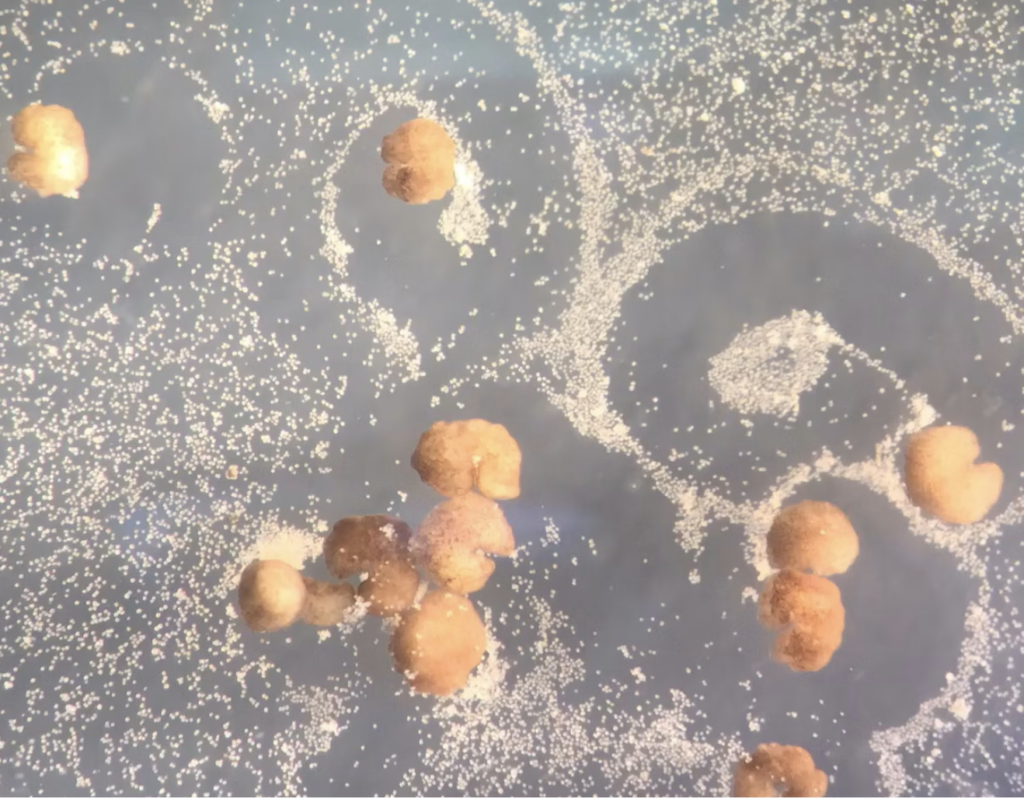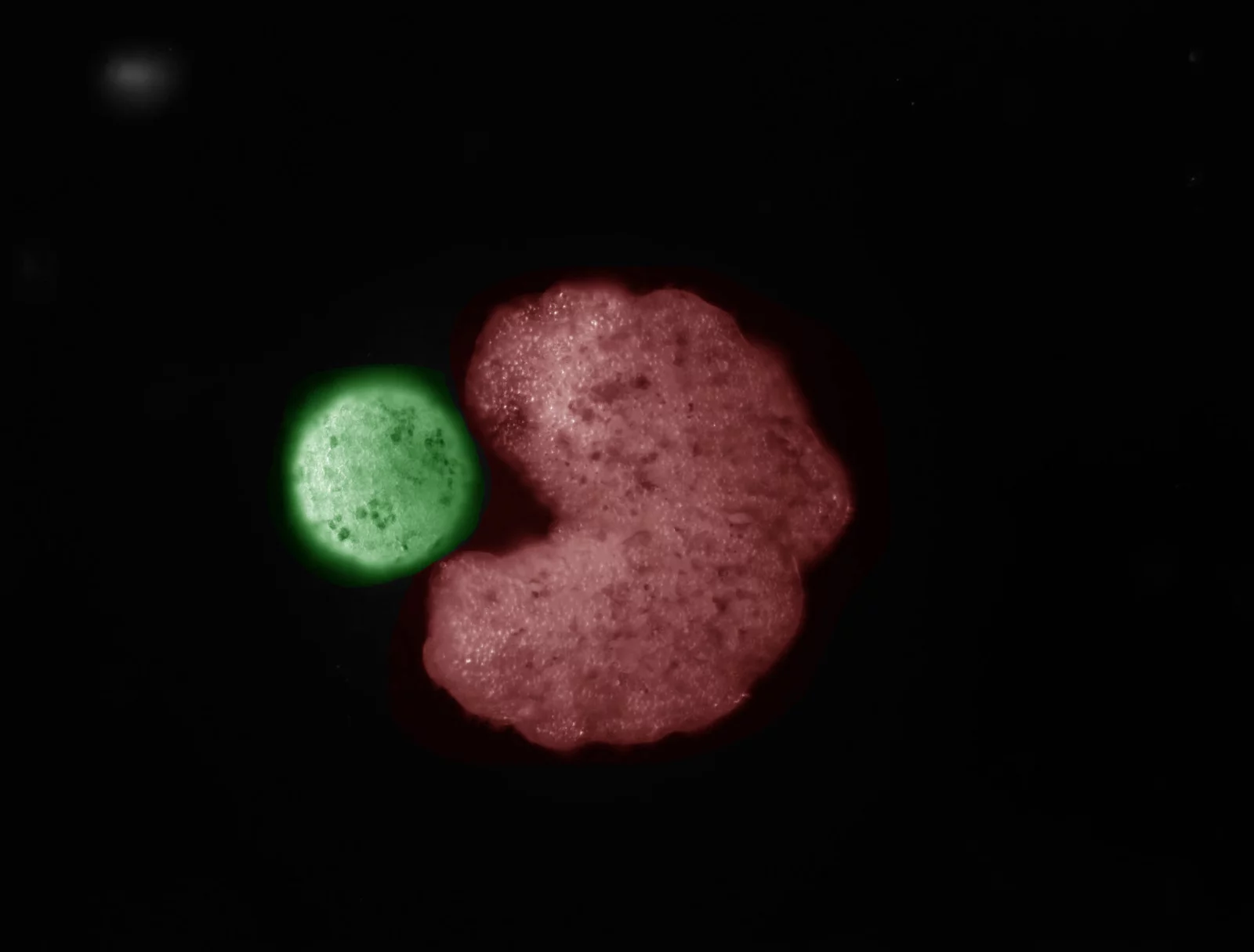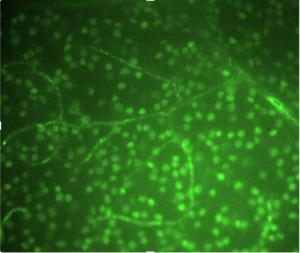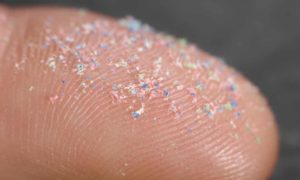A new form of biological self replication designed by artificial intelligence
The persistence of life relies on reproduction, a process organisms have used for billions of years to evolve. During the pandemic, a new form of biological replication was discovered by a group of scientists from the University of Vermont, Tufts University, and Harvard University’s Wyss Institute (3). Using the stem cells from an African clawed frog (Xenopus laevis) embryo, they found that the embryonic cells used kinematic replication to reproduce, a process that had previously only been observed on the molecular level (3, 5). Instead of growing and producing an offspring, such as in processes like asexual and sexual reproduction, kinematic replication combines “building blocks” of the organism into an identical counterpart (2). These collections of stem cells, often referred to as “xenobots,” gather additional loose stem cells and compress the cells into what will eventually become new xenobots, which will continue the same cycle of reproduction (3).
The less-than-one-millimeter wide xenobots can only be created within the lab and are being researched for a myriad of future applications (1). Scientists begin by removing the membrane of an amphibian embryo and harvesting the stem cells within (1). After harvesting, the stem cells are layered into wells of a petri dish so the cells can reaggregate into a sphere of tissue (1). When creating a xenobot, the genes are not manipulated, simply the cells are rearranged (5, 8). The natural shape of these organisms are millimeter-sized spheres composed of skin and heart muscle cells from the stem cells of frog embryos (3, 7). The skin cells help provide rigid support, while the heart cells allow the xenobot to move by contracting and expanding (4). Scientists have also experimented with modifying xenobots to grow patches of cilia, tiny hair-like structures that propel them in a corkscrew fashion (4, 8). Cilia, however, are significantly less controllable than movement powered by the heart cells (4). RNA has also been manually incorporated into xenobots, allowing the organism to have molecular memory (2). Xenobots have no brain or digestive system, surviving for weeks without food (4, 8).

Although the natural shape of xenobots is spherical, scientists and programmers have been using artificial intelligence to find a more optimal shape because kinematic replication occurs rarely and only under specific circumstances, and spherical xenobots tend to die after only one replication cycle (3, 5). Using artificial intelligence, computational programmers can simulate candidate xenobot lifeforms with a cell-based construction toolkit and predict xenobot behaviors (6). After months of artificial intelligence experimentation with different shapes at the University of Vermont, scientists determined a c-shaped xenobot provided the most efficient xenobot replication; the shape closely resembled Pac-Man and allows the single tiny mouth to easily gather large piles of stem cells (3, 8). With this Pac-Man shape, it takes five days to produce an “offspring” under optimal conditions (8). Scientists were able to modify the xenobot’s spherical shape by using micro-cautery and surgical forceps to sculpt the xenobot into Pac-Man (1). Unfortunately, because the offspring of all xenobots receive no genetic material from the parent xenobot, the c-shape will not be passed down to offspring, and the organism also cannot mutate or evolve (1).

Xenobots are undoubtedly organisms because they are made of unmodified frog cells, but they are also robots (5). Despite often categorizing robots as human figures constructed out of metal, the scientists creating xenobots define a robot as something that acts on its own on the behalf of people, which is certainly a property of xenobots (5). Xenobots can walk, swim, push and carry objects, and work together in groups to complete a task (6). Given the robotic nature of xenobots, opponents to xenobots have voiced concerns about self-replicating biotechnology and potential issues of these organisms entering our environment (8). Nevertheless, scientists have stated that xenobots pose no threat and are completely under control within a laboratory; most xenobots also tend to die after a single replication cycle (8). If xenobots got out of control, researchers can easily remove loose stem cells from the organisms’ environment to prevent them from reproducing (8).

Overall, xenobots are a fascinating discovery with a variety of potential applications. Scientists believe that versions of xenobots may help pull microplastics out waterways, build new medicines and vaccines, find cancer cells within the human body, and much more (3, 5, 8). Xenobots are still an early technology, but give us a deeper understanding of reproduction within our world and the combination of artificial intelligence and molecular biology (3, 5).
References:
- Blackiston, D. (n.d.). Building CDOs (Computer Designed Organisms) from amphibian cells [Video]. https://www.youtube.com/watch?v=R8mkupUoPgQ
- Blackiston, D., Lederer, E., Kriegman, S., Garnier, S., Bongard, J., & Levin, M. (2021). A cellular platform for the development of synthetic living machines. Science, 6(52).
- Brown, J. (2021, November 29). Team builds first living robots — that can reproduce. Wyss Institute. Retrieved January 22, 2022, from https://wyss.harvard.edu/news/team-builds-first-living-robots-that-can-reproduce/
- Charles, K. (2021, March 31). Living robots made from frog skin cells can sense their environment. New Scientist. Retrieved January 22, 2022, from https://www.newscientist.com/article/2273516-living-robots-made-from-frog-skin-cells-can-sense-their-environment/
- Hunt, K. (2021, November 29). World’s first living robots can now reproduce, scientists say. CNN. Retrieved January 22, 2022, from https://www.cnn.com/2021/11/29/americas/xenobots-self-replicating-robots-scn/index.html
- Kriegman, S., Blackiston, D., Levin, M., & Bongard, J. (n.d.). Computer-designed organisms. CDOrgs. Retrieved January 22, 2022, from https://cdorgs.github.io/
- Kriegman, S., Blackiston, D., Levin, M., & Bongard, J. (2020). A scalable pipeline for designing reconfigurable organisms. Proceedings of the National Academy of Sciences of the United States of America. https://www.ncbi.nlm.nih.gov/pmc/articles/PMC6994979/
- Neuman, S. (2021, December 1). Living robots made in a lab have found a new way to self-replicate, researchers say. NPR. Retrieved January 22, 2022, from https://www.npr.org/2021/12/01/1060027395/robots-xenobots-living-self-replicating-copy







Comments are closed.